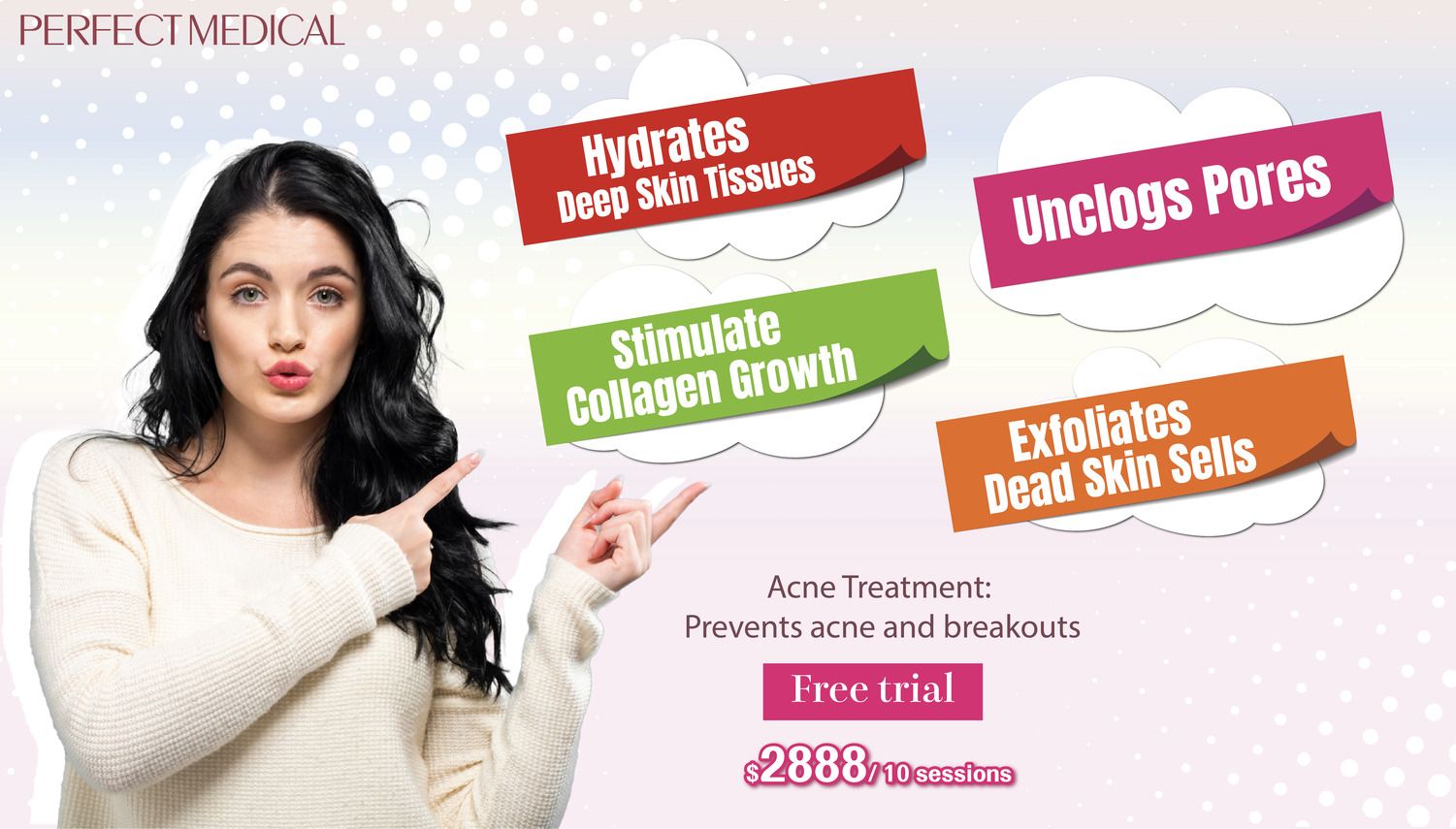
免費體驗
Acne Treatment
1 Minute Self-Registration
Date should not be before minimal date
If you've ever strolled down the skincare aisle in search of an effective acne solution, you've likely encountered benzoyl peroxide. This ingredient isn't just popular; it's a proven warrior in the battle against acne, backed by solid scientific evidence. In this guide, we'll dive into everything you need to know about benzoyl peroxide—from its skin benefits to crucial safety tips. We'll also instruct you on mixing benzoyl peroxide with other popular acne-fighting ingredients to help you get the most out of both worlds. Whether you're considering benzoyl peroxide for the first time or thinking about incorporating it back into your routine, this blog is here to arm you with the insights you need to make an informed decision and to guide you toward achieving clearer, healthier skin. So, let's get started and turn the tide in your fight against acne!
1
What is Benzoyl Peroxide?
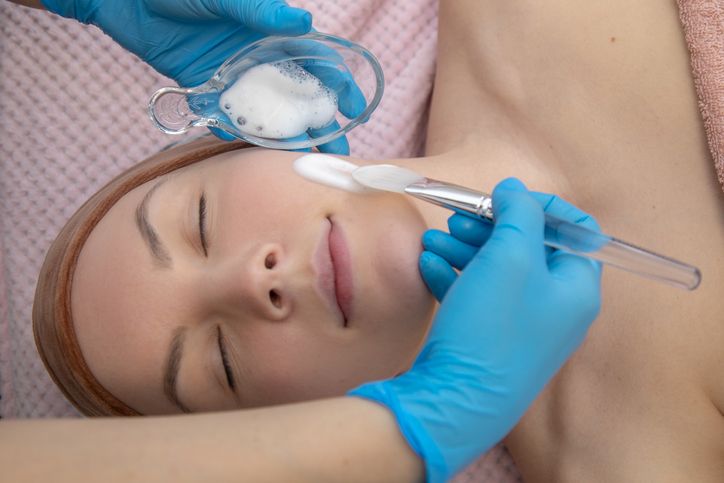
Have you ever wondered how benzoyl peroxide works to fight acne? As a topical treatment widely recommended by dermatologists, benzoyl peroxide tackles acne head-on. It’s effective because it kills bacteria directly linked to acne development and helps remove excess oil and dead skin cells that clog pores. Whether you're dealing with a mild breakout or more persistent acne, using benzoyl peroxide can be a game changer in your skincare routine.
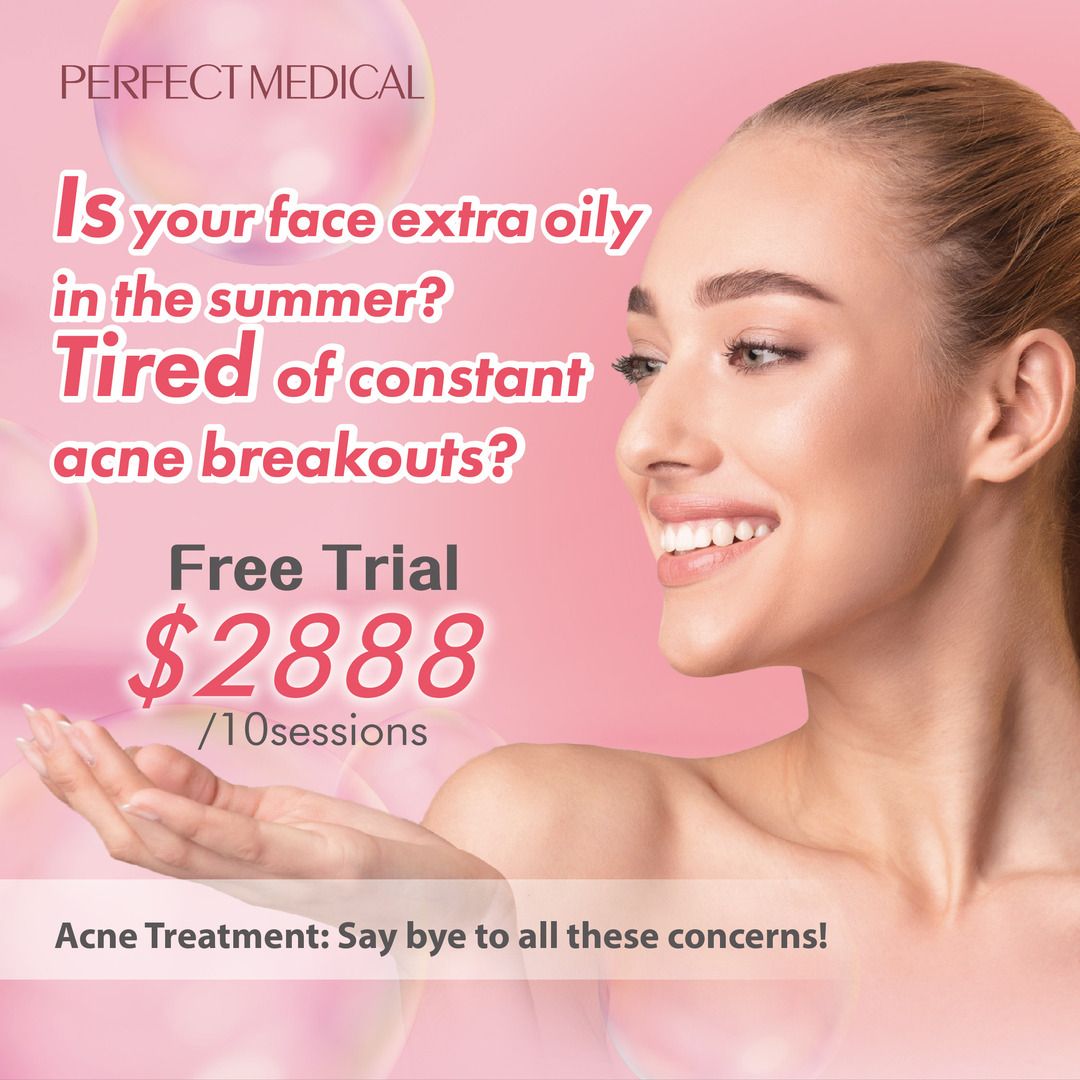
2
How is Benzoyl Peroxide Good for Acne?

Kills Acne-Causing Bacteria
Benzoyl peroxide is a powerhouse against Propionibacterium acnes (P. acnes) bacteria, the notorious culprits behind acne. These bacteria thrive on the sebum (oil) your skin produces, breaking it down into fatty acids that lead to skin irritation and inflammation. When you apply benzoyl peroxide, it disrupts the bacteria's cell membranes, effectively reducing their numbers and giving your skin a chance to heal.
Reduces Acne Inflammation
Not only does benzoyl peroxide help kill bacteria, but it also boasts anti-inflammatory properties that soothe inflamed acne lesions. If you're struggling with redness, swelling, or tenderness associated with acne, incorporating benzoyl peroxide into your regimen might bring much-needed relief.
Keeps Pores Unclogged
One of the key benefits of benzoyl peroxide is its ability to exfoliate dead skin cells that can block pores. By promoting the turnover of skin cells, it helps keep your pores clear, reducing the likelihood of future breakouts and maintaining a smoother skin texture.
Reduces Facial Oil
If excessive oiliness is your concern, benzoyl peroxide may be part of the solution. It can regulate the amount of sebum produced by your skin's glands, preventing pores from becoming blocked and helping to minimize the appearance of new acne lesions.
3
Mixing Benzoyl Peroxide with Other Acne-Fighting Ingredients

AHA and BHA (Salicylic Acid and Glycolic Acid)
While AHAs like glycolic acid work on the skin's surface to remove dead cells, BHAs such as salicylic acid penetrate deeper into the pores. Benzoyl peroxide complements these by providing the additional benefit of bacterial control. However, using both benzoyl peroxide and these acids can be drying or irritating. It's best to apply them at different times of the day (e.g., AHA/BHA in the morning and benzoyl peroxide at night) or on alternate days, particularly if you have sensitive skin. Always use sunscreen, as these ingredients can make your skin more sensitive to the sun.
Niacinamide
Known for reducing inflammation and regulating oil production, niacinamide is a soothing agent in your fight against acne. It's particularly effective when used alongside benzoyl peroxide, as it can help soothe irritation and enhance overall skin health without conflicting effects. Use niacinamide in the morning to help with oil regulation and redness, and benzoyl peroxide in your evening routine to fight acne-causing bacteria effectively. This staggers their impact and minimizes irritation.
Azelaic Acid
Both azelaic acid and benzoyl peroxide share antibacterial and anti-inflammatory properties, but azelaic acid might be a gentler option if you have sensitive skin. Both ingredients are generally well-tolerated when used together. For best results, apply azelaic acid in the morning and benzoyl peroxide at night. This not only helps in managing irritation but also ensures continuous acne-fighting action throughout the day and night.
Retinol
Retinol is celebrated for promoting cell turnover and reducing signs of aging like wrinkles and hyperpigmentation. However, it can be irritating. Worse, combining retinol with benzoyl peroxide increases the risk of skin irritation. If you decide to use both, it's crucial to introduce them gradually and monitor how your skin reacts. Apply retinol at night and benzoyl peroxide in the morning, or use them on alternate nights.
Tea Tree Oil
Tea tree oil is a natural antibacterial alternative, though it can be drying and might irritate sensitive skin. Benzoyl peroxide generally provides a more robust solution for a variety of acne types without some of the drawbacks associated with natural oils. When using tea tree oil and benzoyl peroxide together, caution is advised due to potential overdrying or irritation. Consider applying tea tree oil as a spot treatment and benzoyl peroxide as a general application, or use them on alternate days.
Vitamin C
To brighten your skin tone and protect against sun damage, vitamin C is an excellent choice. Vitamin C and benzoyl peroxide can be used together but with care, as benzoyl peroxide can oxidize vitamin C, reducing its effectiveness. Apply vitamin C in the morning to help protect against free radical damage and benzoyl peroxide at night to combat acne. This separation not only preserves the integrity of both ingredients but also maximizes their benefits throughout the day.
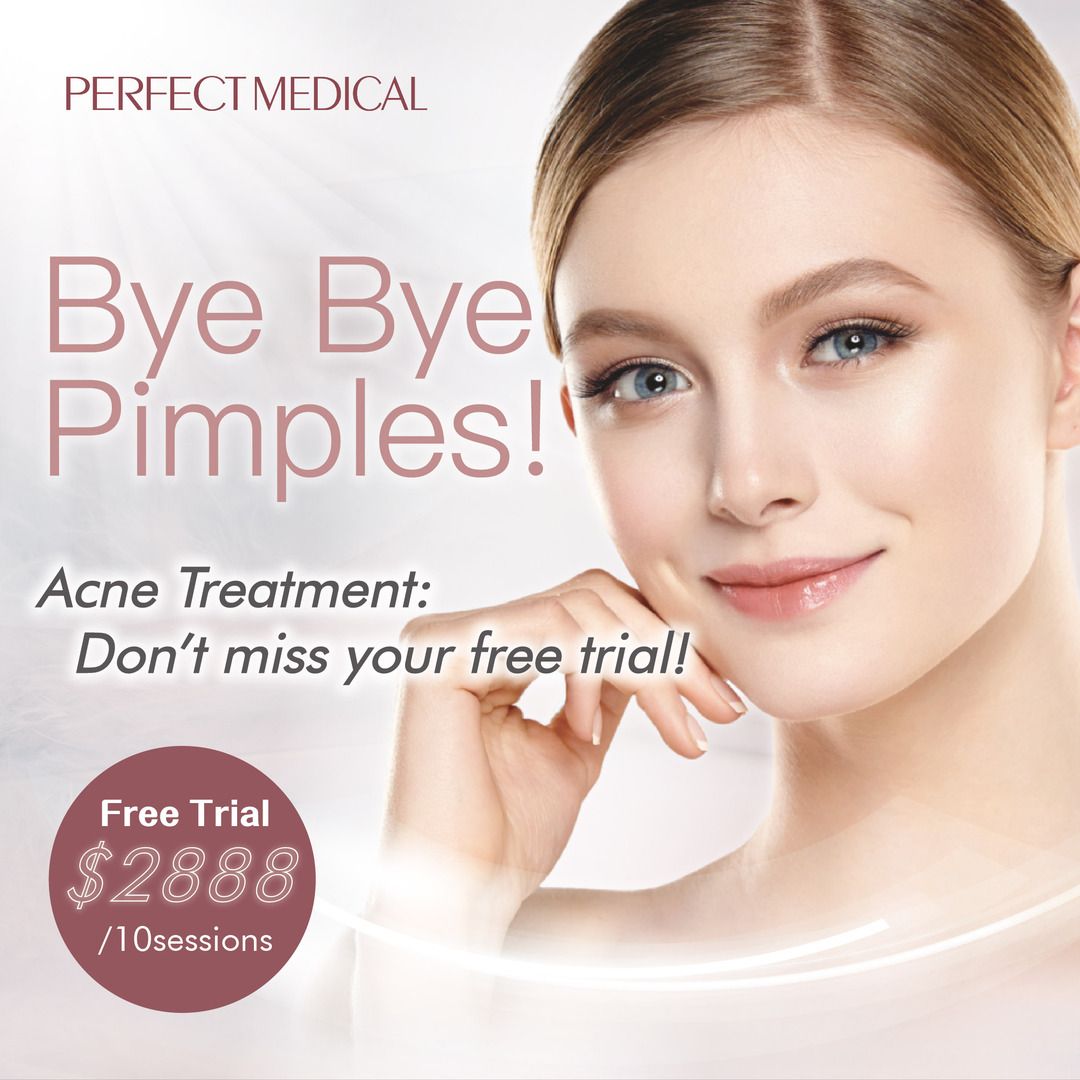
4
Tips on Picking the Best Benzoyl Peroxide Products for You

Which Formulation?
Choosing the right benzoyl peroxide product depends largely on your skin type and how it reacts to different formulations. If you have oily skin, a benzoyl peroxide cleanser might be the best starting point. Cleansers designed for acne-prone skin typically contain concentrations that are effective yet gentle enough for daily use, helping to manage oil production and clear clogged pores without over-drying the skin.
For those with normal or slightly dry skin, lotions or creams containing benzoyl peroxide offer a balance between efficacy and moisture. These products are often formulated with emollients and hydrators that help offset the drying effects of benzoyl peroxide, making them suitable for a twice-daily application.
Gels are particularly suited for oily skin due to their lightweight formulation that tends not to leave a residue, which can exacerbate oiliness. They absorb quickly and can deliver benzoyl peroxide deep into the pores without contributing to further oil production.
Toners containing benzoyl peroxide should be approached with caution. They can be very effective in removing residual dirt and oil, but their alcohol content can be overly drying, especially if used frequently. If you choose to use a toner, apply it only a few times a week and always follow up with a non-comedogenic moisturizer to maintain skin hydration.
The Right Percentage of Benzoyl Peroxide?
Selecting the appropriate concentration of benzoyl peroxide is crucial for effective treatment and minimizing skin irritation. Starting with a lower concentration, such as 2.5%, is advisable because it significantly reduces the risk of irritation while still being effective against acne. Clinical studies have shown that lower concentrations can be just as effective as higher ones but with fewer side effects.
As your skin adjusts to the treatment, you may consider increasing the strength to 5% if results plateau and your skin can tolerate it. This should be done gradually and only if necessary, as higher concentrations offer no additional benefits if the lower one is effective. Individuals with particularly stubborn acne might find better results with 10% concentrations, but these should only be used under the guidance of a dermatologist due to the increased risk of irritation.
Over-the-Counter or Prescription?
Most people can manage their acne with over-the-counter benzoyl peroxide products, available in strengths from 2.5% to 10%. These products are generally sufficient for mild to moderate acne. However, severe acne or acne that doesn't respond to over-the-counter strengths may require a prescription-strength formulation. Dermatologists can prescribe higher concentrations or combination therapies that include other active ingredients like antibiotics or retinoids, which can enhance the efficacy and manage more severe acne cases effectively.
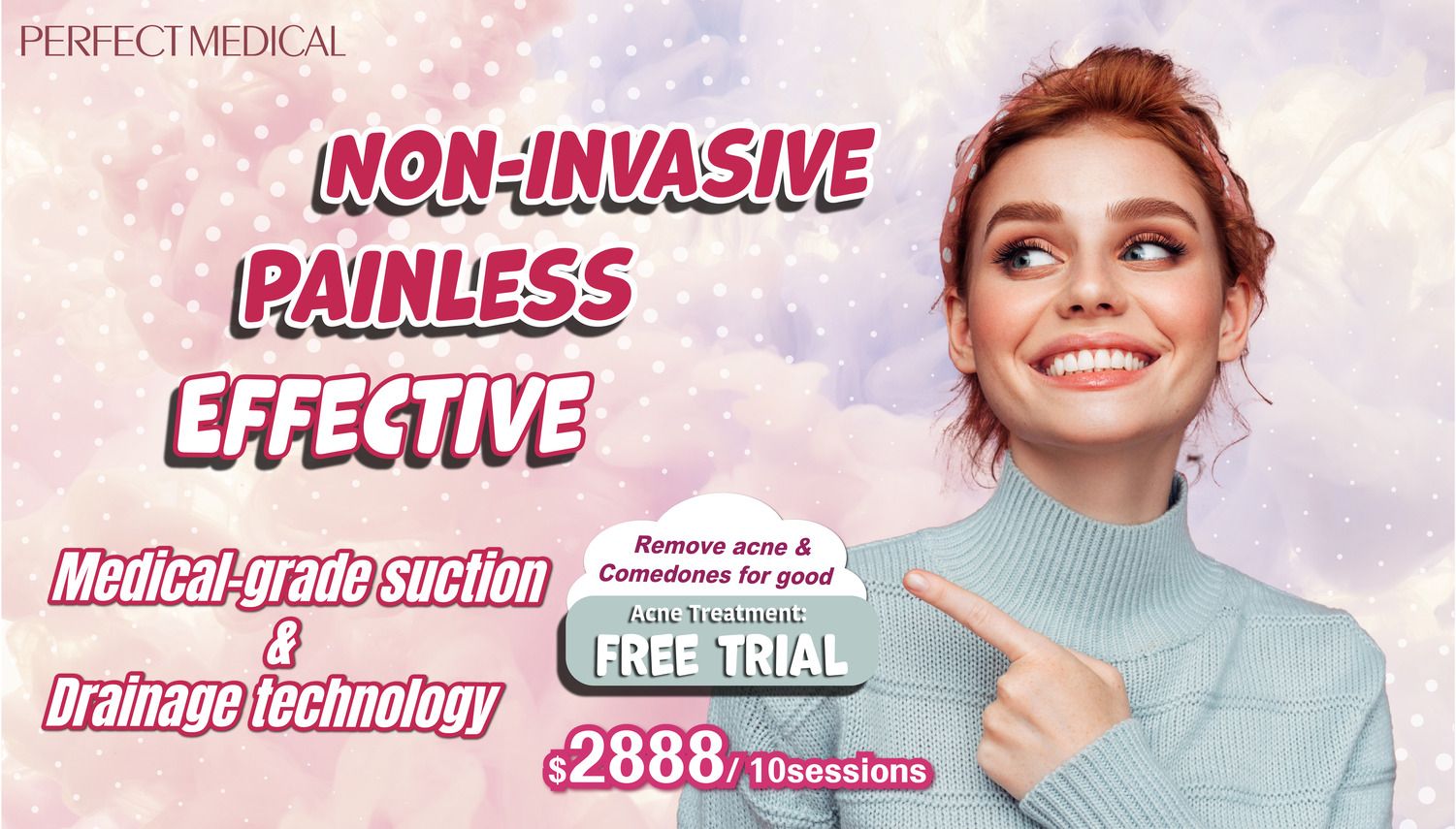
免費體驗
Acne Treatment
1 Minute Self-Registration
Date should not be before minimal date
5
Typical Concerns Over Benzoyl Peroxide

Side Effects of Benzoyl Peroxide
Benzoyl peroxide is a powerful acne treatment, but like any effective medication, it comes with potential side effects. The most common side effects include: - Dryness: Benzoyl peroxide has a strong drying effect as it works to reduce oil production in the skin. This can strip the skin of its natural oils, leading to dryness. - Peeling: As part of its action to combat acne, benzoyl peroxide increases skin cell turnover. This accelerated shedding can result in peeling. - Irritation: The compound can be harsh on the skin, particularly at higher concentrations, leading to redness and irritation. - Redness and Swelling: Some users may experience redness and swelling, particularly if they have sensitive skin or use high concentrations without proper acclimatization.
Who Are More at Risk - Individuals with Sensitive Skin: Those with naturally sensitive skin are more likely to experience severe dryness, peeling, and irritation from benzoyl peroxide. - First-time Users: People who are new to benzoyl peroxide treatments may experience more intense side effects as their skin adjusts to the treatment. - Users of High Concentrations: Starting treatment with high concentrations of benzoyl peroxide (e.g., 10%) without gradual introduction increases the risk of severe skin reactions. - Those Not Following Usage Directions: Improper use, such as applying too much product, using it too frequently, or combining it with other irritating skincare ingredients (like retinoids or certain acids), can also increase the likelihood of side effects.
Allergic Reactions to Benzoyl Peroxide
While relatively rare, allergic reactions to benzoyl peroxide can be quite severe and demand immediate attention. These reactions can manifest as: - Intense Itching: An overwhelming urge to scratch the treated area, which can further irritate the skin. - Redness: The affected area may become notably red, a sign of irritation and inflammation. - Swelling: This can occur in the areas where the benzoyl peroxide has been applied, indicating a severe allergic response. - Blisters: In extreme cases, small to large blisters may form, which can lead to further discomfort and potential skin infections.
Who Are More at Risk - People with a History of Allergies: If you have a history of allergic reactions to topical products or sensitive skin, you may be more prone to an allergic reaction to benzoyl peroxide. - First-time Users: Individuals using benzoyl peroxide for the first time may not be aware of their sensitivity to the ingredient until they experience an allergic reaction. - Those Using Higher Concentrations: Using higher concentrations without prior exposure or without a patch test can increase the risk of an allergic reaction.
Tips for Safe Use
- Patch Testing: Before fully integrating benzoyl peroxide into your skincare regimen, it's crucial to perform a patch test. Apply a small amount of the product to a discreet area of skin, like behind the ear or on the forearm, and wait 24 hours to observe any adverse reactions. - Gradual Introduction: If the patch test is clear, begin using the product gradually, starting with lower concentrations and limited application areas to minimize potential reactions. - Monitor Skin Response: Keep an eye on your skin’s response during the initial days of treatment. Any signs of discomfort or unusual reactions should be taken seriously. - Consultation with Healthcare Providers: If you experience any symptoms of an allergic reaction, discontinue use immediately and consult with a healthcare provider. They can provide guidance, alternative treatment options, and possibly prescribe medications to help manage the reaction.
Photosensitivity
Benzoyl peroxide can increase your skin's sensitivity to UV rays, leading to quicker sunburns and photoaging. It is crucial to apply a broad-spectrum sunscreen every morning, reapplying every two hours when outdoors. For additional protection, wearing wide-brimmed hats and seeking shade during peak sunlight hours can further reduce the risk of UV damage while using benzoyl peroxide.
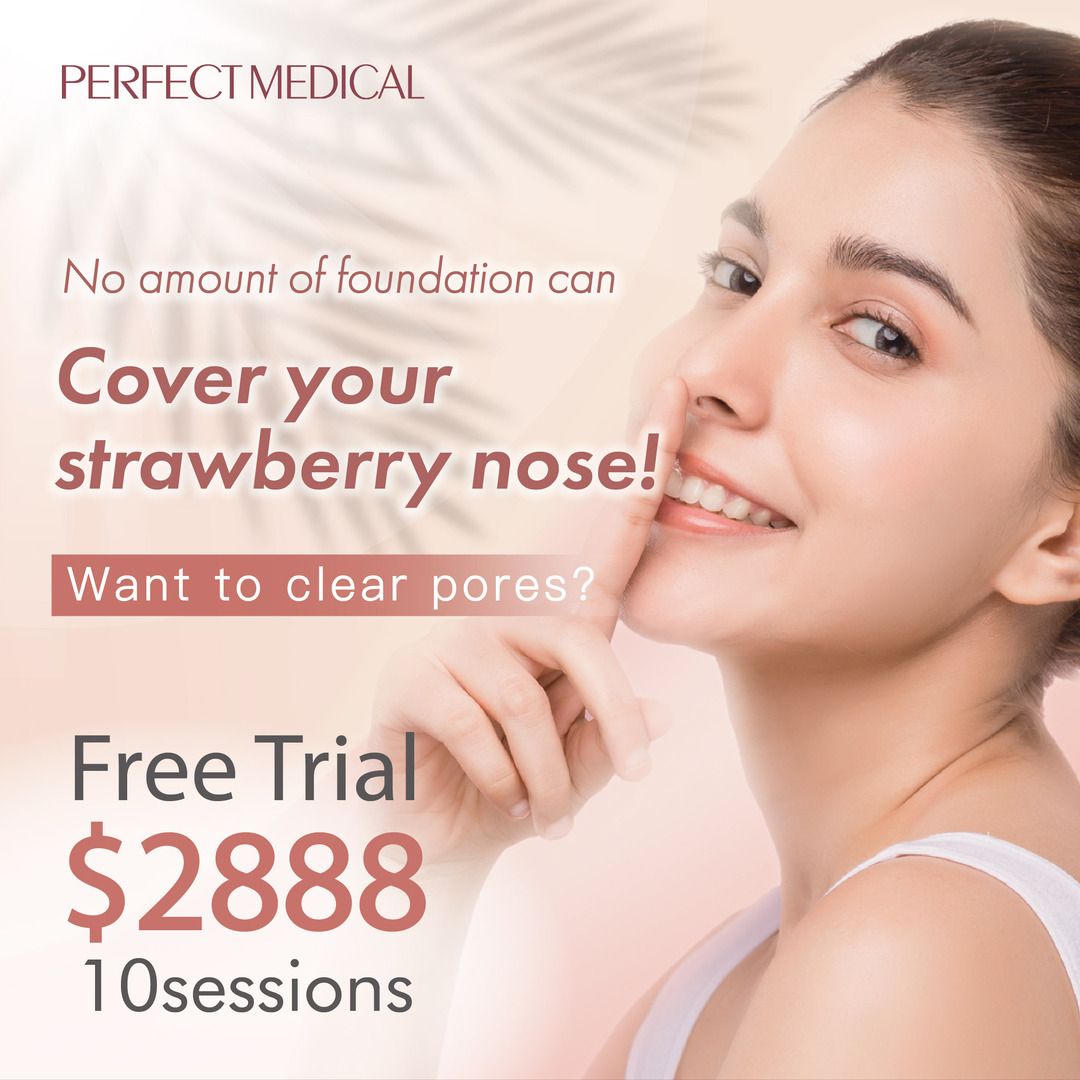
6
Safety Tips for Using Benzoyl Peroxide

To safely use benzoyl peroxide, start with the lowest effective dose and only increase as needed. Avoiding sun exposure and wearing protective clothing and sunscreen are critical, as benzoyl peroxide can make your skin more prone to sunburn. It is also advised to avoid using other potentially irritating or drying products, such as retinoids or alcohol-based toners, in the same routine without consulting a dermatologist. Regular moisturization is key to maintaining skin integrity and comfort while using benzoyl peroxide, as it can help prevent the over-drying and irritation commonly associated with this acne treatment.
- The Difference Between Acne and Pimples: Find Out Which Part You Have Been Doing It Wrong
- Annoyed By Frequent Breakouts? Check Out How To Fight Acne On Chin With Ease!
- Period Acne Why And How: Achieve A Healthy Skin By Defeating Them
- How Does Pimple Patch Improve Acne and Breakout? What Are the 10 Best Pimple Patches?
7
Discover Clear Skin with Perfect Medical's Acne Treatment

Introducing Perfect Medical's Acne Treatment, your ultimate partner in the battle against breakouts throughout the year! Experience the power of our cutting-edge vacuum dermabrasion technology, designed to gently yet effectively unclog pores and exfoliate your skin. By removing oil, dirt, and dead skin cells, this technology sets the stage for a cleaner, acne-free complexion.
Once your skin is pristine, we infuse it with an exclusive, medical-grade hydrating essence. This step not only soothes your skin but also reduces sebum production, which is key in preventing inflammation and the growth of acne-causing bacteria. Plus, it promotes deep-skin collagen repair, enhancing your skin’s elasticity and giving you that sought-after glow.
After the treatment, you'll notice your skin feels refreshed and revitalized—truly free from acne. But it's more than just a cleaning process; it's a comprehensive, long-term skincare strategy tailored for all skin types. Our innovative approach not only manages acne bacteria but also prevents future breakouts, addressing issues like pimples, blackheads, and oily skin. The result? Smooth, clear, and flawlessly silky skin.
What’s more, Perfect Medical’s Acne Treatment is safe, painless, and non-irritating, with no wounds and lasting results. You'll only need a few sessions, each quick and with no downtime, so you can continue with your daily routine without interruption.
Don’t miss out—try Perfect Medical’s Acne Treatment for free today and step into a life of clear, vibrant skin!
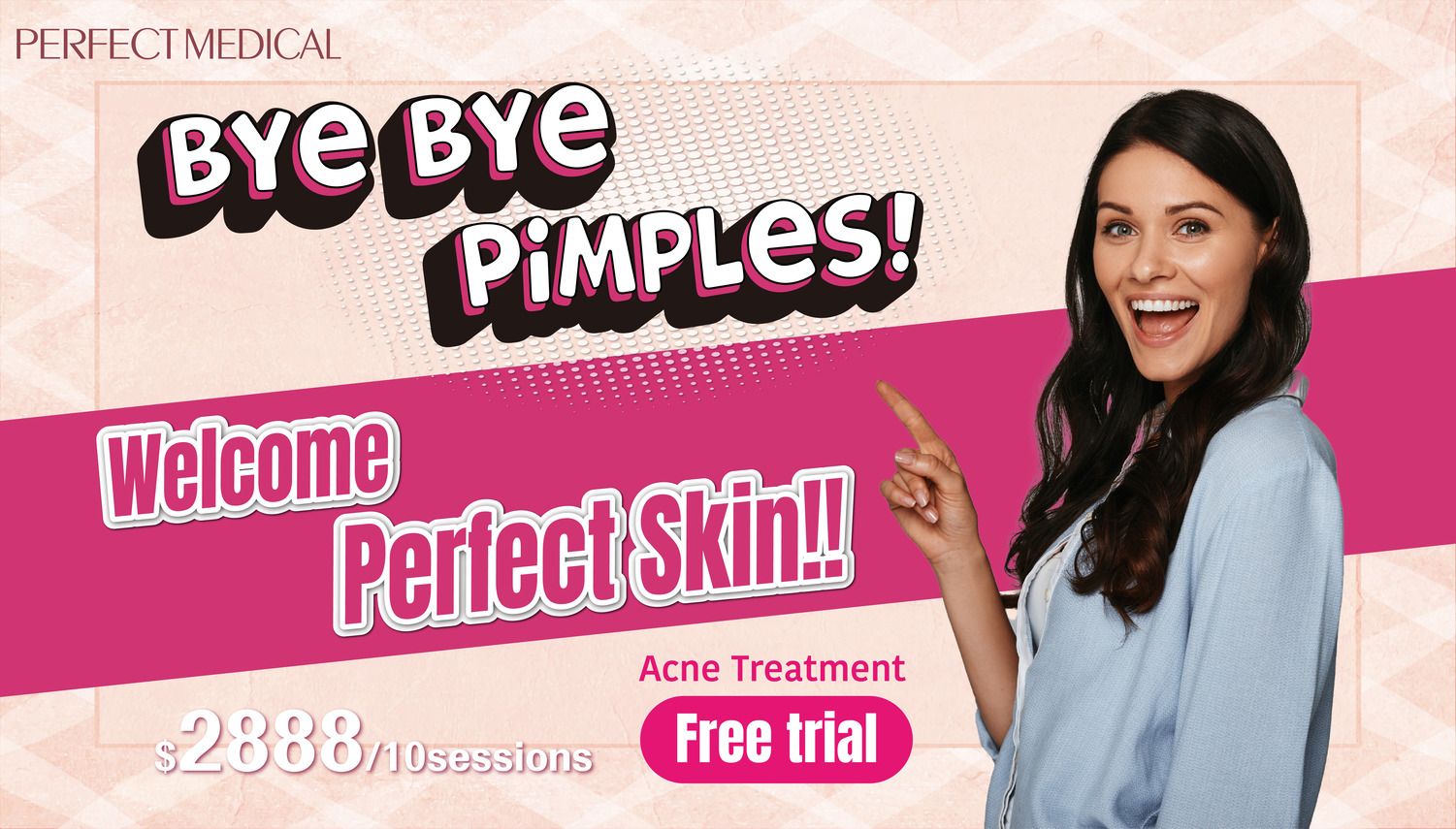
免費體驗
Acne Treatment
1 Minute Self-Registration
Date should not be before minimal date
FAQ

How long does it take to see results from benzoyl peroxide?
It typically takes about 4 to 6 weeks to see noticeable improvements in acne. Continuous use is necessary to maintain the benefits.
Can benzoyl peroxide bleach fabric?
Yes, benzoyl peroxide can bleach clothing, towels, and bedding. It’s advisable to use white towels and pillowcases or allow the product to dry completely before contact with fabric.
Is benzoyl peroxide safe for all skin types?
Benzoyl peroxide is safe for most skin types but can be particularly drying. Those with sensitive or dry skin should start with a lower concentration and use it less frequently.
How often should I use benzoyl peroxide?
Start with once daily application, preferably at night, to see how your skin reacts. If well-tolerated, you can increase to twice a day or as directed by your dermatologist.
Can benzoyl peroxide make acne worse?
Initially, benzoyl peroxide might cause an increase in irritation and peeling, which can seem like acne is worsening. However, this is typically temporary, as the skin adjusts to treatment.





